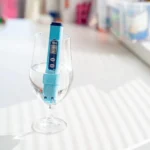Saltwater is co-produced during oil and natural gas extraction. This is also known as produced water, formation water, or oilfield brine. As the saltwater is heavily polluted with mixtures of salt, hydrocarbons, solids, and various other substances that come from the oil and gas reservoirs, it is hazardous to the environment. So, it must be disposed of properly. Due to the high concentration of salts like chlorides, sulfates, and bicarbonates, produced water is also known as saltwater. As per data from 2017, the U.S. alone generates more than 20 million barrels (1 barrel = 42 gallons) of Produced Water per day as byproducts of pumping oil out of the ground. In this article, we will learn about the meaning, importance, and methods of saltwater disposal.
Importance of Saltwater Disposal
Salt Water Disposal (SWD) is the process of managing and disposing of produced water. There are various reasons, that saltwater disposal in the oil and gas industry must be performed.
- Saltwater is a waste product without any economic value.
- Proper disposal of saltwater is essential to protect the environment. If not managed correctly, the produced water can harm ecosystems and water sources through contamination.
- Each country has its own regulations that mandate the safe and responsible disposal of salt/produced water. Non-compliance can result in fines, legal liabilities, and damage to a company’s reputation.
- Saltwater disposal by injecting the water back into the reservoir through disposal wells can help maintain the reservoir pressure.
- Efficient saltwater disposal methods can minimize the wastage of water resources.
- Finally, proper SWD practices reduce the operational costs for oil and gas operators.
Fig. 1 (Image Courtesy: https://riskengineers.com/swd-process/) below shows a typical saltwater disposal facility

Saltwater Disposal Methods
There are several methods for disposing of produced water. Various parameters like regulatory requirements, geological conditions, economic considerations, etc contribute to the selection of a specific method. The primary saltwater disposal methods are:
Saltwater Disposal Injection Wells
In this method of saltwater disposal, Injection wells inject the produced water deep into underground geological formations, typically into porous and permeable rock layers known as disposal zones. These zones are typically located below hydrocarbon-bearing formations, ensuring that salt water does not interfere with oil and gas production. In Texas alone, more than 50,000 such saltwater disposal well sites are present.
Advantages of Salt Water Disposal Injection Wells:
- Prevents surface contamination.
- Helps maintain reservoir pressure, enhancing hydrocarbon recovery.
- Commonly used and well-regulated.
Disadvantages:
- Requires careful site selection and geologic assessment.
- Potential for induced seismicity (earthquakes) in some cases.
- High initial drilling and operational costs.
Saltwater Disposal by Surface Discharge
Surface discharge involves the controlled release of treated produced water into surface water bodies, such as rivers, streams, or the ocean, after meeting stringent environmental and regulatory standards.
Advantages:
- Lower upfront costs compared to injection wells.
- A sustainable option if environmental impact is carefully managed.
Disadvantages:
- Strict environmental regulations apply, making compliance challenging.
- Risk of ecological damage if not adequately treated and monitored.
- Limited applicability in arid regions or areas with sensitive ecosystems.
Saltwater Disposal by Evaporation Ponds
Evaporation ponds are shallow, man-made basins. Here the produced water evaporates, leaving behind concentrated salts and solids for disposal.
Advantages:
- Low operating costs.
- Effective in arid regions with high evaporation rates.
Disadvantages:
- Large land footprint.
- Risk of groundwater contamination if liners fail.
- Limited suitability for regions with high rainfall or cold climates.
Recycling and Reuse of Saltwater
Recycling and reuse involve treating produced water to remove contaminants and then using it for various purposes within the oil and gas industry, such as fracking or EOR.
Advantages:
- Reduces freshwater demand.
- Can be economically viable.
- Aligns with sustainability goals.
Disadvantages:
- Requires advanced treatment technologies.
- Not suitable for all types of produced water.
- May still require some form of disposal for excess or untreated water.
Salt Water Disposal Regulations and Environmental Considerations
The disposal of saltwater can have significant environmental impacts if not managed properly. Key environmental concerns include:
- Produced water can contain contaminants that harm aquatic ecosystems and drinking water sources.
- The injection of produced water into disposal wells has been linked to induced earthquakes in some regions.
- Surface discharge can disrupt aquatic habitats and harm wildlife.
- Improperly designed or maintained disposal wells can lead to groundwater contamination.
Regulatory Framework
Regulations governing saltwater disposal vary by region and can include federal, state, and local laws. Key regulatory aspects include:
- Operators typically need permits to dispose of produced water, with stringent requirements for well construction, monitoring, and reporting.
- Regulations often set limits on the concentrations of specific contaminants in produced water.
- Injection wells are classified based on their potential to cause underground sources of drinking water contamination (Class I, II, III, or V), with Class I wells being the most regulated.
- Operators must regularly monitor and report on disposal activities to regulatory agencies.
To give an example, The Environmental Protection Agency (EPA) administers the regulation of Saltwater Disposal Wells in accordance with the Federal Safe Drinking Water Act. Specifically, the Underground Injection Control (UIC) program governs the injection of fluids into underground rock formations to safeguard against contamination of underground sources of drinking water (USDWs). The UIC program is under the purview of the EPA and is enforced through a framework of state and local regulations.
Advantages of Using Saltwater Disposal Wells Over Other Methods of Wastewater Management
As stated above, there are different ways by which saltwater or produced water disposal is managed. Each of these methods has its own advantages and disadvantages. However, saltwater disposal by Saltwater Disposal Wells provides certain unique benefits over the other methods:
- SWD Wells can be located on-site which eliminates transportation costs and spill risks.
- Injecting produced water deep underground does not contaminate the surface waterways and drinking water supplies.
- At the same time, the saltwater injection helps to increase reservoir pressure which enhances oil recovery rates.
- SWD wells can efficiently handle large volumes of produced water.
Emerging Trends in Saltwater Disposal
As the oil and gas industry evolves and faces increasing environmental and sustainability challenges, several emerging trends are shaping the future of saltwater disposal:
Advanced Treatment Technologies
- Membrane Filtration: Advanced membranes can efficiently remove contaminants, including salts and hydrocarbons, from produced water.
- Chemical Precipitation: Innovative chemical processes can selectively precipitate salts and metals, yielding cleaner water.
- Electrocoagulation: Electrochemical methods can remove suspended solids and oil droplets from produced water.
Water Reuse and Recycling
- Closed-Loop Systems: Operators are increasingly adopting closed-loop systems where produced water is treated and reused for hydraulic fracturing and EOR, reducing freshwater demand.
- Mobile Treatment Units: Mobile treatment units are becoming more common, allowing on-site treatment and immediate reuse of produced water.






